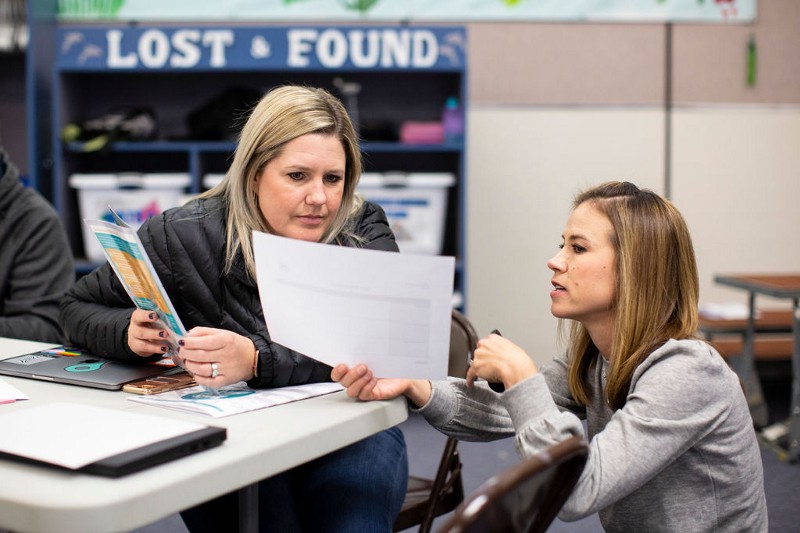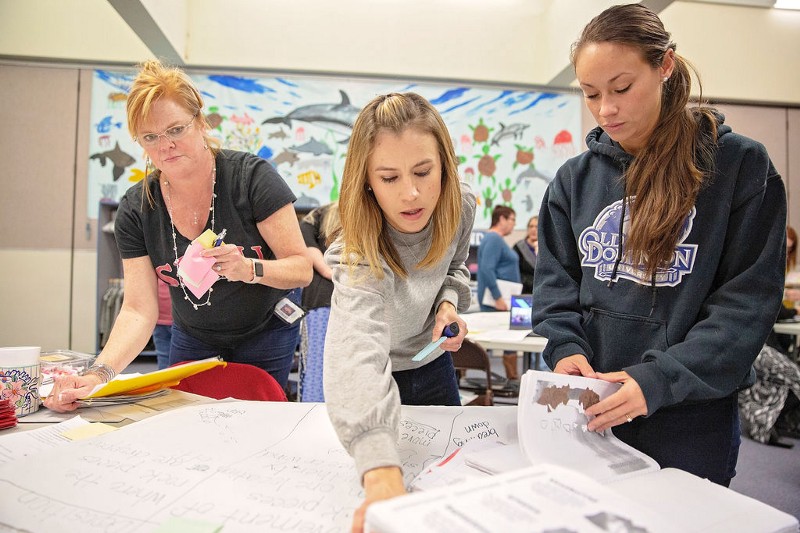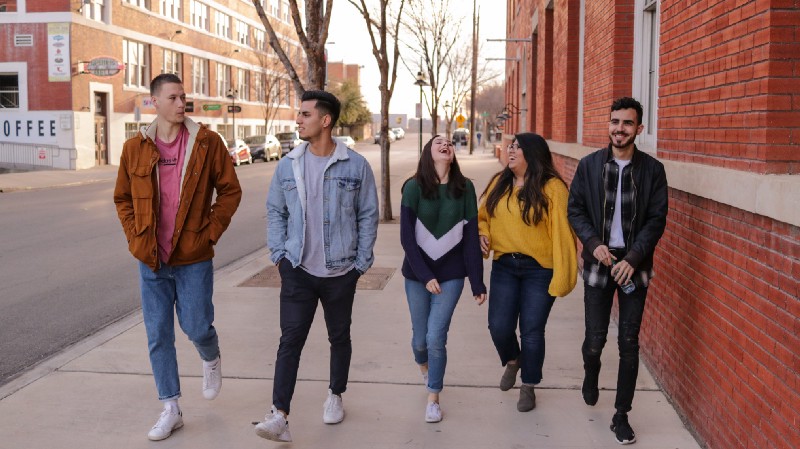More often than not PBL educators get stuck in a rut, not quite sure how to elevate their practice or reignite their passion for teaching and learning. Fortunately, there are people like Dr. Jenny Pieratt, founder of CraftED Curriculum, who enrich and transform learning experiences across all contexts.
Known to push the boundaries of project-based learning and help fellow educators bring deeper learning strategies to their classroom, Jenny has spent over three years building the foundation of CraftED. In offering professional development workshops, project planning workbooks, PBL e-courses and custom curriculum development, Jenny continues to meet teachers where they are and help them crush barriers with dynamic PBL implementation.
So what makes Jenny the kind of consultant you want to work with?
“Jenny’s passion for developing professional learning opportunities… is contagious,” shares George Couros, Author of Innovator’s Mindset. George discusses how Jenny “empowers and inspires” the educators she works with by pushing their “thinking and growth.” With reviews spanning multiple states and diverse school settings, it is evident that Jenny is the kind of consultant everyone wants to work with.
Having built a wealth of experience in education over the past 10 years, Jenny has worked alongside progressive thinkers at High Tech High, New Tech Network, BIE and Getting Smart. In navigating every journey and wearing many proverbial “hats” in education, Jenny has served as an educator, a school development coach, a national faculty member and more.
Jenny says, “I had seen so many challenges that educators were facing in trying to implement PBL on a really broad scale. And I had just been going rogue and innovating with them in all different roles. I just felt like it was time for me to go out and try to do it on my own.”
As CraftED continues to evolve, so does Jenny. “I remember someone asking me how I felt during my first couple of months in this work,” says Jenny. “I felt like a teenager when they’re growing and they’re long and lanky. The growing pains I felt — that is it, right there.”
In this interview with Headrush, Jenny shares tips and tricks for PBL alignment, along with her CraftED journey in helping to inspire educators to craft and elevate their PBL practice.

In all of your experiences, what are the three recurring challenges across the board that educators face when trying to implement PBL?
A pretty big barrier I that I see is alignment. Most schools have multiple expectations… We want you to do PBL but we also want you to implement X Y and Z curriculum and we want you to stick to this pacing guide. Most schools are missing alignment in how PBL supports their greater vision, which is a top down challenge and out of a teacher’s control.
Linked to that, most schools are lacking the structures to do this kind of work right. For example, I’ll go into schools that are big, comprehensive middle or high schools with clear messages that they want teachers to do interdisciplinary projects — but there is no built-in collaboration time for them to work together. So the structures aren’t there for them to collaborate or to have planning time or anything like that, which is also a top-down issue.
I think the third challenge is just the lack of resources. Every teacher will tell you they struggle with coming up with ideas. They can’t find ideas for their grade level or demographic that, they feel, represents their students or is authentic to their communities. Some teachers need quality resources that provide them some guidance, or they need someone to hold their hand through the process. You can’t just ask educators to do it, walk away and hope it gets done. There needs to be someone who’s there partnering with them.
And you get to be that partner!
What I love about my work now is that I’m there in the thick of it with them. I come back to their classrooms, then I come back again, I see their growth, we reflect, we refine and then I come back again. So, it’s this ongoing partnership that makes the difference. This is really the first time in my life where I’ve been able to see impact because of that final piece. I go down swinging for that time because I see how it actually makes its way to kids when that is the way the partnership is set up.

Now that you have autonomy with CraftED, it sounds like you can gauge what long term partnership means and looks like at each school.
Yes, and I’ve started playing around with the virtual space because obviously I can support each educator more easily, but it’s different in every place. People reach out to me and say, “Oh, we want you to come work with our teachers. What does it look like?” Then I’d say, “Well, I can’t even really tell you that until you tell me.” The arc of support looks different for every place that I’m in because everybody’s different, operating in a different place. So I think that’s also been something that’s been really cool about that autonomy piece that you mentioned. I can really be nimble enough to meet them where they are and I think that’s made all the difference.
Do you think PBL is the future of education?
In my happy place, I envision global domination of PBL… But the thing that I am also very transparent about is that PBL is not always done well and, in some cases, I would almost rather see traditional learning than PBL not done well because, as with anything, if it’s just not helpful for kids and it can be harmful, actually. I do think PBL is gaining momentum. I think everybody thought it was going to be a fad that went away and it actually hasn’t. It really comes down to continuing to calibrate… For example, when I say PBL and you say PBL, what does that mean? However, I love the work of the HQ PBL framework because that to me is the differentiator. So when I go into schools, the first thing we always do is calibrate and I ask, “When we talk about quality, what does that mean to you?” Because there’s all these definitions about high quality project-based learning which are great. But I care more about how that individual community defines quality because that’s what they’re going to aspire to design.
Where do you think technology fits into this movement of student-led learning?
I think a lot of people are trying to figure that out. I love seeing different apps and programs that support students and the project process; that’s why I got so excited about seeing the work of Headrush because I also think it can be a place that holds best practices with PBL. There are plenty of platforms out there that PBL schools can work with, but they don’t guarantee the best practices of project-based learning will happen. And when I see something like Headrush I get really excited because you can’t skirt around what we know makes for a high quality project. Sometimes I work with teachers and the main second part of my workshop is on assessment and we talk about how to design benchmarks, how we formatively assess those benchmarks, and how to create your tool and then I’ll come back and I’ll say, “Ok how did it go using your rubric?” And they respond, “We never finished our rubric.” But when I saw Headrush, I realized that is not an option for teachers because it is built in to the structure. It has to be in there. My overarching response would just be that there are so many possibilities with technology to use it as a lever within the project but also to uphold its quality.
What is unique that CraftED brings to schools?
I’m very real about things. I believe that so much of PBL is theoretical, which I am a total theory nerd, and that’s what I wrote my dissertation on. However, theory is just not the reality that most teachers face. So, what has allowed me to stay unique is my project coaching because that’s the time when I sit down with teachers and say, “Lay it all out. Give me all your curriculum, all your pacing guides,” and we will build out the project but it’s really hard sometimes. Being in those challenging situations has forced me to think about how can I continue to create things that will help teachers in those situations, because that’s the majority of this wave that’s adopting PBL. That’s what they’re up against. And I think that practice versus theory has resonated with a lot of people and that’s where we’re really seeing the impact happen.
Do you have a final piece of advice for educators who are thinking of shifting to a project-based approach?
Yes! Do one thing well. I say that over and over again. Because anytime educators come in with their preconceived notion of what PBL is, they realize it’s a lot of things. So, do one thing well. Really understand what your North Star is and what you’re trying to get to, but know that you’re not going to get there right away. For example, some schools will say they value voice and choice, and authenticity, and collaboration and technology — yet when you have all these aspirations, chances are you’re not doing any of them well. So as a staff it would be good to work through one thing together that year and be really intentional about it and support each other through that process. And then in the next year move on to the second one. PBL is a journey. Just pick one thing and feel good about it, do it well, everybody will have a good experience and then you’re in. Everything from there is a much more enjoyable process.
Formerly a classroom teacher, Jenny provides onsite and virtual PBL coaching and consulting to administrators and teachers across the US and abroad. For more information please visit www.craftedcurriculum.com and follow her on social media @crafted_jennypieratt.

